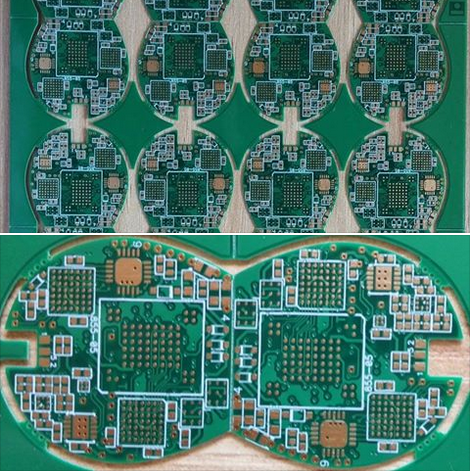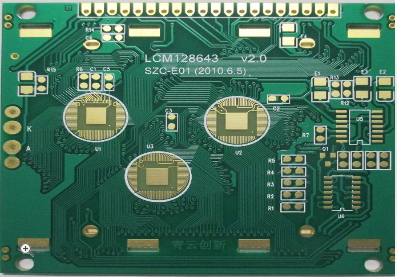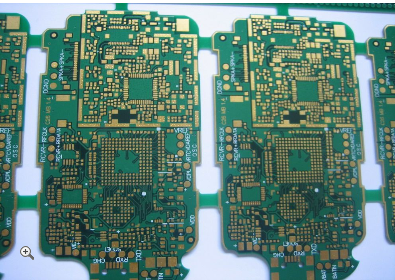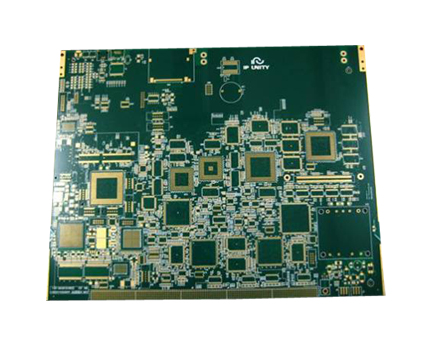-
 Agriculture
Agriculture
-
 Health-Care
Health-Care
-
 Environment
Environment
-
 Construction-Real-Estate
Construction-Real-Estate
-
 Tools-Hardware
Tools-Hardware
-
 Home-Garden
Home-Garden
-
 Furniture
Furniture
-
 Luggage-Bags-Cases
Luggage-Bags-Cases
-
 Medical-devices-Supplies
Medical-devices-Supplies
-
 Gifts-Crafts
Gifts-Crafts
-
 Sports-Entertainment
Sports-Entertainment
-
 Food-Beverage
Food-Beverage
-
 Vehicles-Transportation
Vehicles-Transportation
-
 Power-Transmission
Power-Transmission
-
 Material-Handling
Material-Handling
-
 Renewable-Energy
Renewable-Energy
-
 Safety
Safety
-
 Testing-Instrument-Equipment
Testing-Instrument-Equipment
-
 Construction-Building-Machinery
Construction-Building-Machinery
-
 Pet-Supplies
Pet-Supplies
-
 Personal-Care-Household-Cleaning
Personal-Care-Household-Cleaning
-
 Vehicle-Accessories-Electronics-Tools
Vehicle-Accessories-Electronics-Tools
-
 School-Office-Supplies
School-Office-Supplies
-
 Packaging-Printing
Packaging-Printing
-
 Mother-Kids-Toys
Mother-Kids-Toys
-
 Business-Services
Business-Services
-
 Commercial-Equipment-Machinery
Commercial-Equipment-Machinery
-
 Apparel-Accessories
Apparel-Accessories
-
 Security
Security
-
 Shoes-Accessories
Shoes-Accessories
-
 Vehicle-Parts-Accessories
Vehicle-Parts-Accessories
-
 Jewelry-Eyewear-Watches-Accessories
Jewelry-Eyewear-Watches-Accessories
-
 Lights-Lighting
Lights-Lighting
-
 Fabric-Textile-Raw-Material
Fabric-Textile-Raw-Material
-
 Fabrication-Services
Fabrication-Services
-
 Industrial-Machinery
Industrial-Machinery
-
 Consumer-Electronics
Consumer-Electronics
-
 Electrical-Equipment-Supplies
Electrical-Equipment-Supplies
-
 Electronic-Components-Accessories-Telecommunications
Electronic-Components-Accessories-Telecommunications
-
 Home-Appliances
Home-Appliances
-
 Beauty
Beauty
-
 Chemicals
Chemicals
-
 Rubber-Plastics
Rubber-Plastics
-
 Metals-Alloys
Metals-Alloys
- Masonry Materials
- Curtain Walls & Accessories
- Earthwork Products
- Fireproofing Materials
- Heat Insulation Materials
- Plastic Building Materials
- Building Boards
- Soundproofing Materials
- Timber
- Waterproofing Materials
- Balustrades & Handrails
- Bathroom & Kitchen
- Flooring & Accessories
- Tiles & Accessories
- Door, Window & Accessories
- Fireplaces & Stoves
- Floor Heating Systems & Parts
- Stairs & Stair Parts
- Ceilings
- Elevators & Escalators
- Stone
- Countertops, Vanity Tops & Table Tops
- Mosaics
- Metal Building Materials
- Multifunctional Materials
- Ladders & Scaffoldings
- Mouldings
- Corner Guards
- Decorative Films
- Formwork
- Building & Industrial Glass
- Other Construction & Real Estate
- Wallpapers/Wall panels
- HVAC System & Parts
- Outdoor Facilities
- Prefabricated Buildings
- Festive & Party Supplies
- Bathroom Products
- Household Sundries
- Rain Gear
- Garden Supplies
- Household Cleaning Tools & Accessories
- Lighters & Smoking Accessories
- Home Storage & Organization
- Household Scales
- Smart Home Improvement
- Home Textiles
- Kitchenware
- Drinkware & Accessories
- Dinnerware, Coffee & Wine
- Home Decor
- Golf
- Fitness & Body Building
- Amusement Park Facilities
- Billiards, Board Game,Coin Operated Games
- Musical Instruments
- Outdoor Affordable Luxury Sports
- Camping & Hiking
- Fishing
- Sports Safety&Rehabilitation
- Ball Sports Equipments
- Water Sports
- Winter Sports
- Luxury Travel Equipments
- Sports Shoes, Bags & Accessories
- Cycling
- Other Sports & Entertainment Products
- Artificial Grass&Sports Flooring&Sports Court Equipment
- Scooters
- Food Ingredients
- Honey & Honey Products
- Snacks
- Nuts & Kernels
- Seafood
- Plant & Animal Oil
- Beverages
- Fruit & Vegetable Products
- Frog & Escargot
- Bean Products
- Egg Products
- Dairy Products
- Seasonings & Condiments
- Canned Food
- Instant Food
- Baked Goods
- Other Food & Beverage
- Meat & Poultry
- Confectionery
- Grain Products
- Feminie Care
- Hair Care & Styling
- Body Care
- Hands & Feet Care
- Hygiene Products
- Men's Grooming
- Laundry Cleaning Supplies
- Travel Size & Gift Sets
- Room Deodorizers
- Other Personal Care Products
- Pest Control Products
- Special Household Cleaning
- Floor Cleaning
- Kitchen & Bathroom Cleaning
- Oral Care
- Bath Supplies
- Yellow Pages
- Correction Supplies
- Office Binding Supplies
- Office Cutting Supplies
- Board Erasers
- Office Adhesives & Tapes
- Education Supplies
- Pencil Cases & Bags
- Notebooks & Writing Pads
- File Folder Accessories
- Calendars
- Writing Accessories
- Commercial Office Supplies
- Pencil Sharpeners
- Pens
- Letter Pad/Paper
- Paper Envelopes
- Desk Organizers
- Pencils
- Markers & Highlighters
- Filing Products
- Art Supplies
- Easels
- Badge Holder & Accessories
- Office Paper
- Printer Supplies
- Book Covers
- Other Office & School Supplies
- Stationery Set
- Boards
- Clipboards
- Stamps
- Drafting Supplies
- Stencils
- Electronic Dictionary
- Books
- Map
- Magazines
- Calculators
- Baby & Toddler Toys
- Educational Toys
- Classic Toys
- Dress Up & Pretend Play
- Toy Vehicle
- Stuffed Animals & Plush Toys
- Outdoor Toys & Structures
- Balloons & Accessories
- Baby Food
- Children's Clothing
- Baby Supplies & Products
- Maternity Clothes
- Kids Shoes
- Baby Care
- Novelty & Gag Toys
- Dolls & Accessories
- Puzzle & Games
- Blocks & Model Building Toys
- Toddler Clothing
- Baby Clothing
- Kids' Luggage & Bags
- Arts, Crafts & DIY Toys
- Action & Toy Figures
- Baby Appliances
- Hobbies & Models
- Remote Control Toys
- Promotional Toys
- Pregnancy & Maternity
- Hygiene Products
- Kid's Textile&Bedding
- Novelty & Special Use
- Toy Weapons
- Baby Gifts
- Baby Storage & Organization
- Auto Drive Systems
- ATV/UTV Parts & Accessories
- Marine Parts & Accessories
- Other Auto Parts
- Trailer Parts & Accessories
- Auto Transmission Systems
- Train Parts & Accessories
- Universal Parts
- Railway Parts & Accessories
- Auto Brake Systems
- Aviation Parts & Accessories
- Truck Parts & Accessories
- Auto Suspension Systems
- Auto Lighting Systems
- New Energy Vehicle Parts & Accessories
- Auto Steering Systems
- Wheels, Tires & Accessories
- Bus Parts & Accessories
- Auto Performance Parts
- Cooling System
- Go-Kart & Kart Racer Parts & Accessories
- Air Conditioning Systems
- Heavy Duty Vehicle Parts & Accessories
- Auto Electrical Systems
- Auto Body Systems
- Auto Engine Systems
- Container Parts & Accessories
- Motorcycle Parts & Accessories
- Refrigeration & Heat Exchange Equipment
- Machine Tool Equipment
- Food & Beverage Machinery
- Agricultural Machinery & Equipment
- Apparel & Textile Machinery
- Chemical Machinery
- Packaging Machines
- Paper Production Machinery
- Plastic & Rubber Processing Machinery
- Industrial Robots
- Electronic Products Machinery
- Metal & Metallurgy Machinery
- Woodworking Machinery
- Home Product Manufacturing Machinery
- Machinery Accessories
- Environmental Machinery
- Machinery Service
- Electrical Equipment Manufacturing Machinery
- Industrial Compressors & Parts
- Tobacco & Cigarette Machinery
- Production Line
- Used Industrial Machinery
- Electronics Production Machinery
- Other Machinery & Industrial Equipment
- Camera, Photo & Accessories
- Portable Audio, Video & Accessories
- Television, Home Audio, Video & Accessories
- Video Games & Accessories
- Mobile Phone & Accessories
- Electronic Publications
- Earphone & Headphone & Accessories
- Speakers & Accessories
- Smart Electronics
- TV Receivers & Accessories
- Mobile Phone & Computer Repair Parts
- Chargers, Batteries & Power Supplies
- Used Electronics
- VR, AR, MR Hardware & Software
- Projectors & Presentation Equipments
- Other Consumer Electronics
- Cables & Commonly Used Accessories
- Computer Hardware & Software
- Displays, Signage and Optoelectronics
- Discrete Semiconductors
- Wireless & IoT Module and Products
- Telecommunications
- Connectors, Terminals & Accessories
- Development Boards, Electronic Modules and Kits
- Circuit Protection
- Sensors
- Isolators
- Audio Components and Products
- Integrated Circuits
- Power Supplies
- Relays
- RF, Microwave and RFID
- Electronic Accessories & Supplies
- Passive Components
- PCB & PCBA
- Air Quality Appliances
- Home Appliance Parts
- Heating & Cooling Appliances
- Small Kitchen Appliances
- Laundry Appliances
- Water Heaters
- Water Treatment Appliances
- Refrigerators & Freezers
- Personal Care & Beauty Appliances
- Major Kitchen Appliances
- Cleaning Appliances
- Second-hand Appliances
- Smart Home Appliances
- Other Home Appliances
- Energy Chemicals
- Inorganic Chemicals
- Basic Organic Chemicals
- Agrochemicals
- Admixture & Additives
- Catalysts & Chemical Auxiliary Agents
- Pigments & Dyestuff
- Coating & Paint
- Daily Chemicals
- Polymer
- Organic Intermediate
- Adhesives & Sealants
- Chemical Waste
- Biological Chemical Products
- Surface Treatment Chemicals
- Painting & Coating
- Chemical Reagents
- Flavor & Fragrance
- Non-Explosive Demolition Agents
- Other Chemicals
- Custom Chemical Services
Precision High Frequency PCBs Engineered for Automotive Radar Sensor Systems
In the rapidly evolving landscape of automotive technology, the quest for enhanced safety and autonomous driving capabilities has placed radar sensor systems at the forefront of innovation. These systems are the eyes of modern vehicles, enabling features like adaptive cruise control, blind-spot detection, and collision avoidance. At the heart of these sophisticated electronic sentinels lies a critical, yet often overlooked, component: the printed circuit board (PCB). However, not just any PCB will suffice. The demanding nature of automotive radar, which operates at high frequencies such as 24 GHz and 77 GHz, requires a specialized breed of circuit boards known as Precision High Frequency PCBs. These are not mere platforms for mounting components; they are highly engineered substrates meticulously designed to ensure signal integrity, reliability, and performance under the harsh conditions of the automotive environment. This article delves into the world of these precision-engineered PCBs, exploring the key aspects that make them indispensable for the next generation of automotive safety.
Material Science and Substrate Selection
The foundation of any high-frequency PCB is its substrate material. Standard FR-4 materials, common in consumer electronics, are inadequate for automotive radar applications due to their poor performance at microwave frequencies. The primary challenge is signal loss, which can severely degrade the radar's range and accuracy. Therefore, Precision High Frequency PCBs utilize advanced laminate materials engineered specifically for these demanding conditions.
Materials such as Polytetrafluoroethylene (PTFE), often blended with ceramic or woven glass, are prevalent choices. These substrates exhibit a low and stable dielectric constant (Dk), which ensures consistent signal propagation speed, and an extremely low dissipation factor (Df), which minimizes signal attenuation as it travels across the board. The thermal stability of these materials is also paramount. Automotive components must operate reliably across a wide temperature range, from freezing cold to scorching heat under the hood. The selected laminates must have a low coefficient of thermal expansion (CTE) to maintain dimensional stability, preventing delamination and ensuring the integrity of delicate circuit patterns through countless thermal cycles.
Precision Manufacturing and Fabrication Tolerances
The term "precision" in Precision High Frequency PCBs is not merely a marketing label; it is a fundamental requirement dictated by the physics of high-frequency signals. At frequencies like 77 GHz, the wavelength is extremely short, meaning that even microscopic imperfections in the PCB fabrication can act as discontinuities, reflecting signals and causing performance issues like standing waves and impedance mismatches.
To achieve the necessary precision, manufacturers employ state-of-the-art processes. Etching of the copper traces must be exceptionally controlled to produce smooth sidewalls and consistent trace widths, which are critical for maintaining a target characteristic impedance, typically 50 ohms. The registration between layers in multilayer boards must be perfect to avoid misalignment that could distort high-frequency fields. Furthermore, the drilling of micro-vias for interlayer connections requires extreme accuracy to ensure reliable plating and signal transmission. The entire fabrication process is conducted in a tightly controlled environment to prevent contamination that could affect the electrical properties of the final board.
Signal Integrity and Controlled Impedance
For an automotive radar system, the integrity of the transmitted and received signals is everything. Any distortion, loss, or interference can lead to false readings, missed obstacles, or reduced detection range. Precision High Frequency PCBs are designed with signal integrity as the paramount objective.
A core principle in this design is controlled impedance. The PCB traces are not simple wires; they are transmission lines. Their geometry (width, thickness, and distance from the reference plane) and the properties of the surrounding dielectric material determine their impedance. Meticulous design and simulation are used to model these transmission lines to ensure they maintain a consistent impedance throughout the entire signal path. Any abrupt change in impedance will cause a portion of the signal to be reflected back to the source, reducing the power delivered to the antenna and creating noise. This is why smooth curves, proper terminations, and careful management of transitions (such as from the PCB to a connector) are so critical in these specialized boards.
Thermal Management and Reliability
Automotive applications represent one of the most challenging environments for electronics. PCBs must withstand not only temperature extremes but also vibration, humidity, and exposure to chemicals. The radar sensor units are often located in the vehicle's grille or bumpers, areas susceptible to impact and environmental stress. Therefore, the reliability of the PCB is non-negotiable.
Effective thermal management is a key part of ensuring long-term reliability. The active components in a radar system, such as the monolithic microwave integrated circuits (MMICs), generate heat during operation. The PCB must efficiently dissipate this heat to prevent overheating, which can degrade performance and shorten the component's lifespan. This is often achieved through the use of thermal vias—arrays of plated-through holes that conduct heat from the surface components down to internal ground planes or dedicated metal cores. In some high-power designs, metal-core PCBs (MCPCBs) are employed to provide superior heat sinking capabilities. Additionally, the materials and finishes used must be resistant to corrosion and whisker growth over the expected lifetime of the vehicle, which can be 15 years or more.
Integration with Antenna Structures
A distinctive feature of many automotive radar PCBs is the integration of the antenna directly onto the substrate. This approach, known as a planar antenna or patch antenna array, offers significant advantages in terms of size, cost, and reproducibility compared to traditional waveguide or horn antennas. The PCB itself becomes the antenna platform.
This integration adds another layer of complexity to the PCB design and fabrication. The shape, size, and spacing of the copper patches must be precisely calculated to resonate at the desired frequency and to form the required radiation pattern, such as a narrow beam for long-range radar. The presence of other components and the PCB's ground plane can affect antenna performance, necessitating comprehensive electromagnetic simulation during the design phase. The fabrication must then perfectly realize these designs, as even minor deviations can shift the antenna's operating frequency or distort its pattern, rendering the radar system ineffective. This seamless fusion of circuit board and antenna is a hallmark of advanced Precision High Frequency PCBs for radar sensors.
REPORT































































































































































































































































































































































































































































































































































































